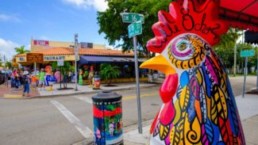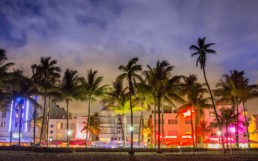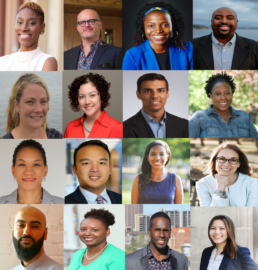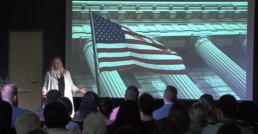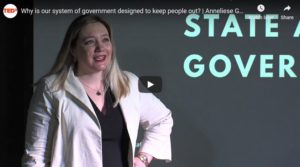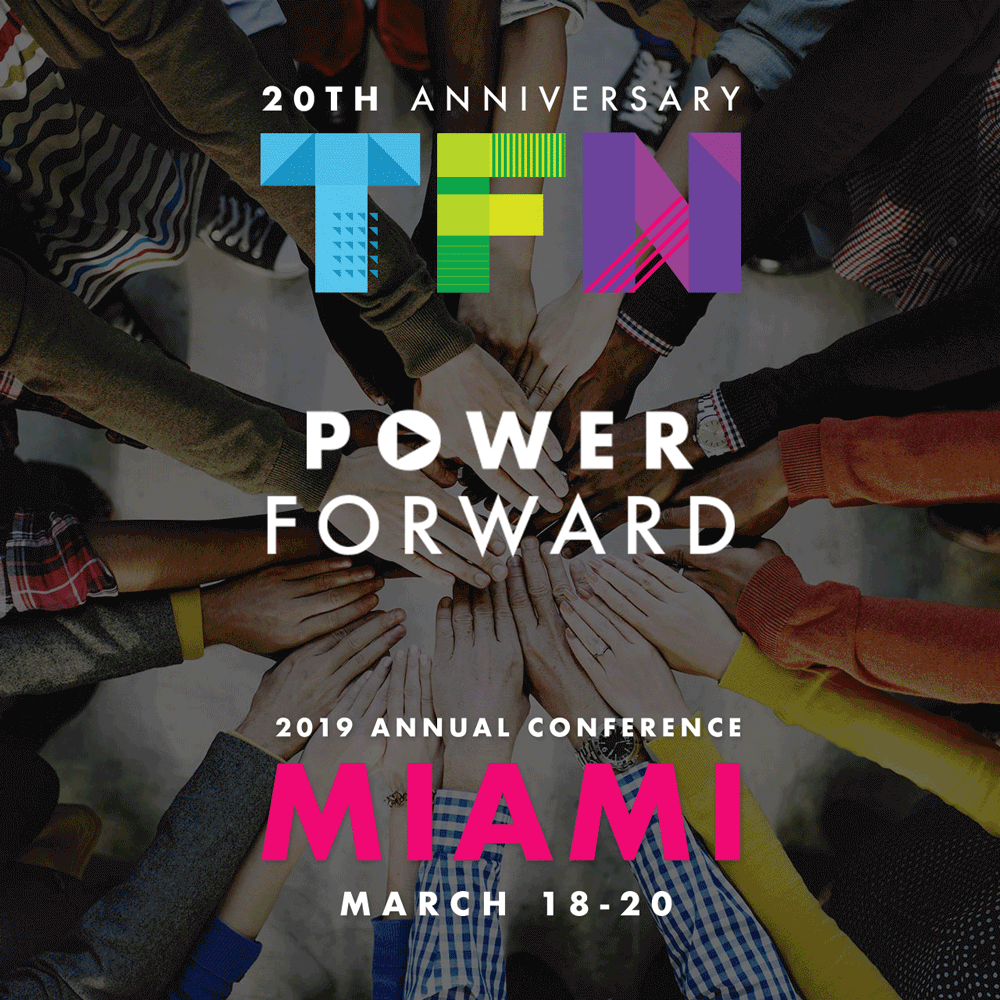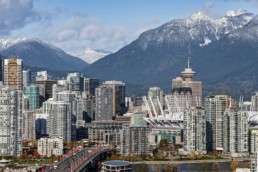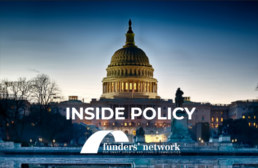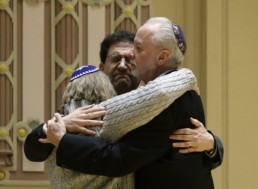Explore & Learn at #TFNMiami: Mobile Workshops and Post-Conference Tour
By: Martha Cecilia Ovadia, Senior Program Associate, Equity and Communications
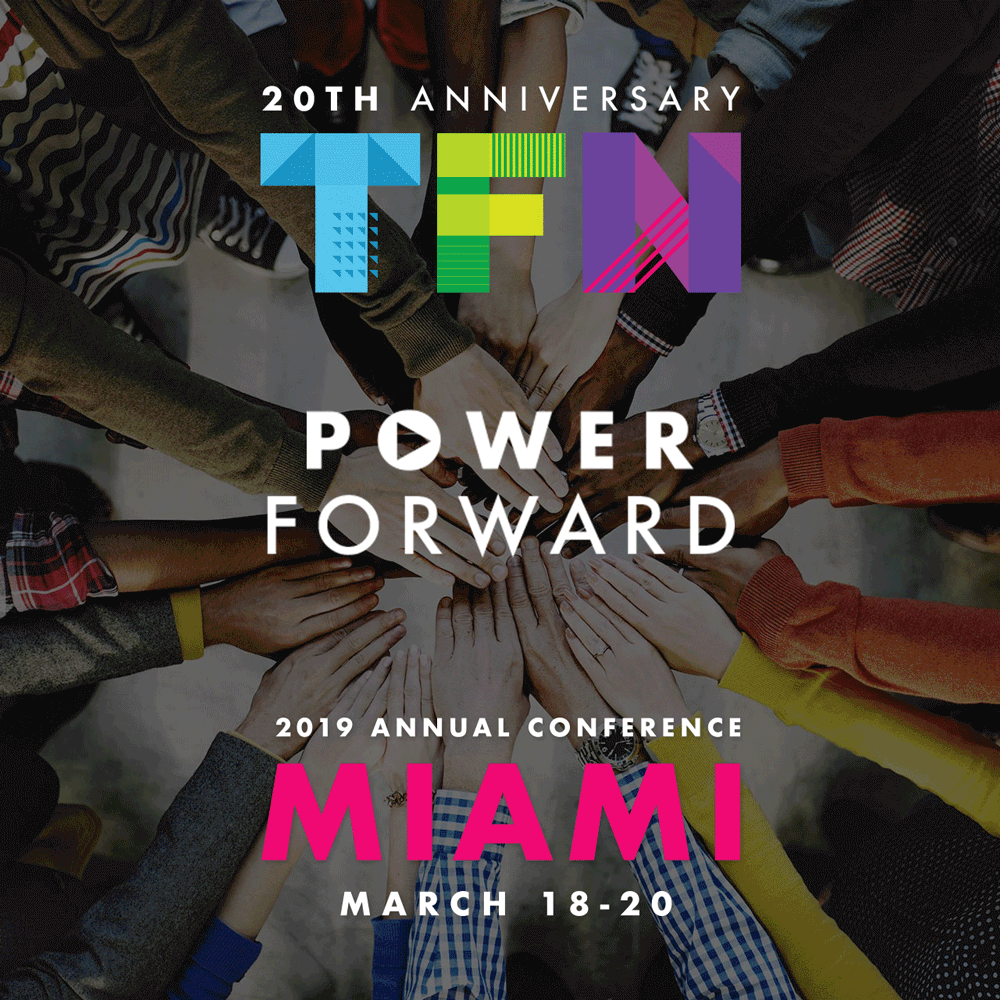
The Funders' Network 20th Anniversary Conference, March 18-20, will offer plenty of opportunities to experience and explore Miami, including five mobile workshops created in partnership with Urban Impact Lab, and a post-conference tour that will focus on the impact of local anchor institutions.
Read below for more information — and be sure to check out our full #TFNMiami agenda here.
Register here.
Post-Conference Tour: Additional Spots Available!
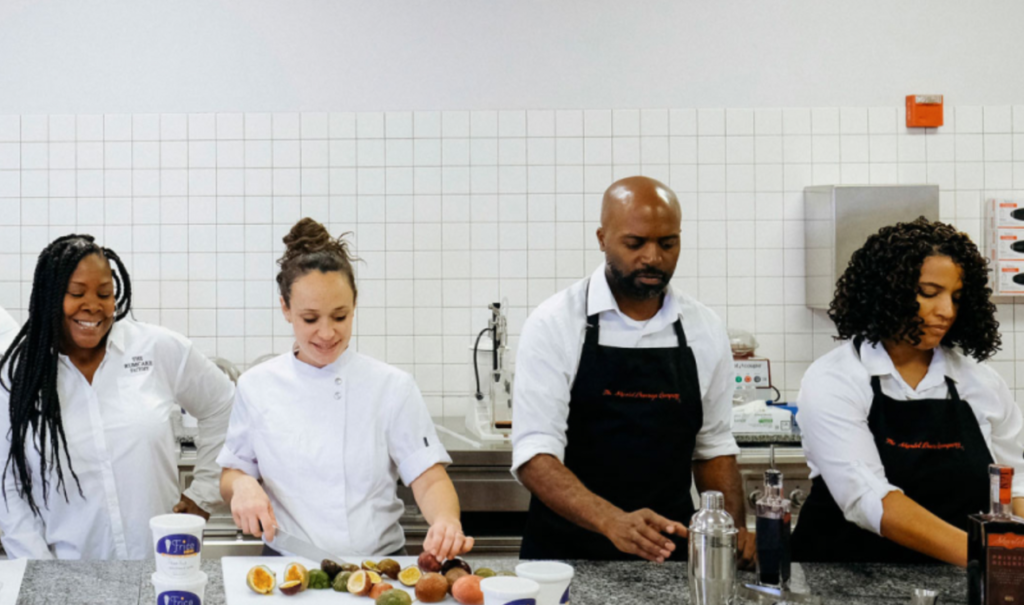
Anchoring Change: The New Civics of Miami’s Next Economy
Wednesday, March 20th
12:00 p.m. - 4:30 p.m.
Updated Itinerary: In a city that is constantly shifting and changing, universities, hospitals and other place-based institutions have become essential building blocks of Miami’s civic infrastructure. Join this post-conference mobile tour to Florida International University to hear and discuss how Miami’s leading institutions are partnering with the philanthropic sector to leverage the myriad resources they direct to help create an inclusive economy in a city that continues to struggle with deep economic disparities. Featured projects include StartUp FIU, the Grow2Heal initiative at Baptist Health of South Florida’s Homestead Hospital, and the Urban League and Broward County Public Schools’ procurement partnership. The bus for this visit boards immediately upon close of the conference at noon and will drop participants at Miami International Airport by 4 p.m. before returning to the hotel. Lunch-on-the-go will be provided.
Mobile Tour Designers and Discussion Moderators:
| Valeria Perez-Ferreiro, Vice President, Citi Community Development |
| Janisse Schoepp, Vice President of Operations and Strategy, Health Foundation of South Florida |
| Charles Rutheiser, Senior Associate, Annie E. Casey Foundation and Co-Chair, TFN Anchor Institutions Funders’ Group |
Please note: This tour is included in your registration, but requires a separate RSVP. Please email Alicia Kitsuse (alicia@www.fundersnetwork.org) to confirm your spot.
#TFNMiami Mobile Tours
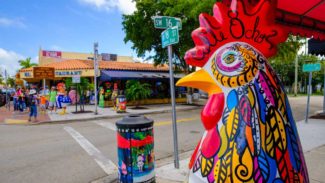
TFN’s annual conferences offer insight on a range of issues at the intersection of equity, environment and economic opportunity — and not just with the confines of the conference venue. Our mobile workshops offer a chance to explore and engage with the communities in our conference city. This year, TFN is partnering with Urban Impact Lab, a Miami-based team of urbanists, scientists, technologists, and designers, to craft compelling and thought-provoking mobile workshops that will introduce us to the people and places that shape this multicultural, semi-tropical city. Check out the mobile tours below!
Registration for mobile workshops will be available on site during the conference.
On the Waterfront: Biscayne Bay/Miami River
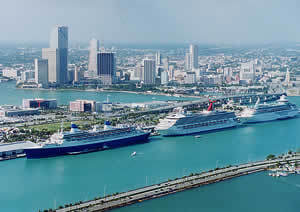
Biscayne Bay is one of Downtown Miami’s most important assets, yet it is also a main contributor to Miami’s vulnerability. From an active seaport to recreational use, the bay meets numerous needs for this community. With so many demands on this fragile ecosystem, the health of Biscayne Bay is always held in a delicate balance.
Sea-level rise and flooding are just some of the challenges associated with Biscayne Bay — and Miami’s resilience is inextricably tied to how well the community can steward this invaluable resource while mitigating the effects of sea level rise.
This workshop begins at the Bayside docks, where the group will join historian Paul George on a boat ride along Biscayne Bay and into the mouth of the Miami River. George will anchor the group in a historical perspective of the bay and its surrounding communities, highlighting the area’s constant growth and expansion. While touring the waterways, local activists and advocates will illustrate the various needs and challenges they confront regularly and how they are organizing communities, sometimes miles away from the bayfront to build a more resilient Miami. Finally, a member of a city agency will share how Miami is moving forward with the Miami Forever Bond and driving investments into projects that may include a living shoreline and other sea level rise mitigation projects.
Cultural Paradox: Wynwood/Little Haiti
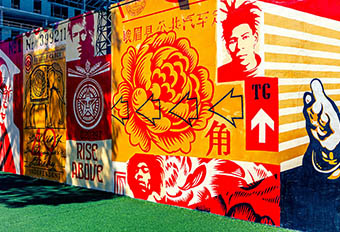
The Wynwood and Little Haiti communities exist in very close proximity to each other — both physically and conceptually. Both communities are buoyed by a distinct sense of place and rich cultural dynamics, yet are mired in issues of growing development pressures, gentrification and displacement.
Less than a decade ago, Wynwood transformed from a mostly quiet, light industrial area into a thriving cultural hotspot, propelled forward by an art scene that has become globally recognized. In the last five years, Little Haiti has both benefited and suffered from the rise of Wynwood — and more broadly, Miami’s — cultural evolution. The city’s investments in Little Haiti such as the development of the Little Haiti Cultural Complex have attracted displaced Wynwood artists, businesses and residents. This has served to elevate Little Haiti’s cultural significance but has also attracted some of the same development attention that priced many locals out of Wynwood. To add to the complexity in the community, Little Haiti is located along Miami’s ridge (a relatively high elevation) making much of it desirable real estate as it is naturally more resilient to sea-level rise and flooding.
The story of Little Haiti is far from complete. Community groups and residents have come together to preserve and protect their community, facing development pressures head on and forming coalitions to advocate for their community — all while battling worsening immigration policies at the federal level. This session starts with a sneak peak of Wynwood, which in many ways can be considered the “after” scenario should Little Haiti’s growth and development proceed unchecked. Traveling between communities, participants will catch glimpses of the type of development that has expanded in the overall area in less than a decade. Participants in this bus and walking tour will meet and learn from community leaders and organizers, and experience one of the community’s cultural centers and iconic markets.
Rails and Trails: Transit and Underline Tour
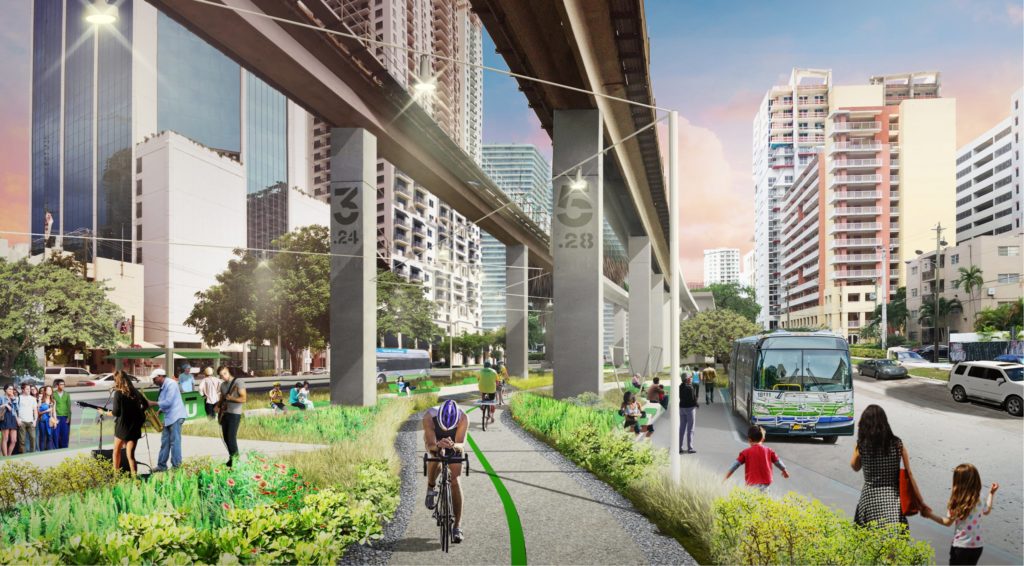
A variety of reliable, useful mobility options are critical to the sustainable growth and development of all cities. Miami has long struggled with its auto-centered development. Now growing to almost three million residents countywide, the region must find ways to improve and expand other mobility options. Crippling congestion, exorbitant tolls, reduced quality of life, resilience challenges and high cost of living are all contributing to the demand for improved transit, walking and biking options. Various organizations have sprung up to advocate for more and better mobility options — including advocates for The Underline.
When complete, The Underline will be a 10-mile linear park running beneath Miami’s elevated MetroRail line, as well as a urban multi-modal trail connecting communities along the US1 corridor. From mobility and active transportation to health, resilience and economic development, The Underline encompasses many aspects that are important to the future of our community. This workshop starts with a lively walking and transit experience led by the Director of Transit Alliance Miami. Challenges and opportunities will be highlighted and participants will be encouraged to share their immediate impressions. The group will travel to one of northern points of The Underline where they will be introduced to their next mode of transportation (likely electric scooters or e-bikes — stay tuned for details!)
The group will experience The Underline in its current state while Meg Daly, president of The Friends of The Underline, shares her story and illustrates the coming improvements to the corridor. The group will visit at least one existing business on the corridor before heading back to the starting point. Along the way, Daly will share the various elements that have been incorporated into the design, including health stations, public art, solar lighting and more.
Resilient Little Havana
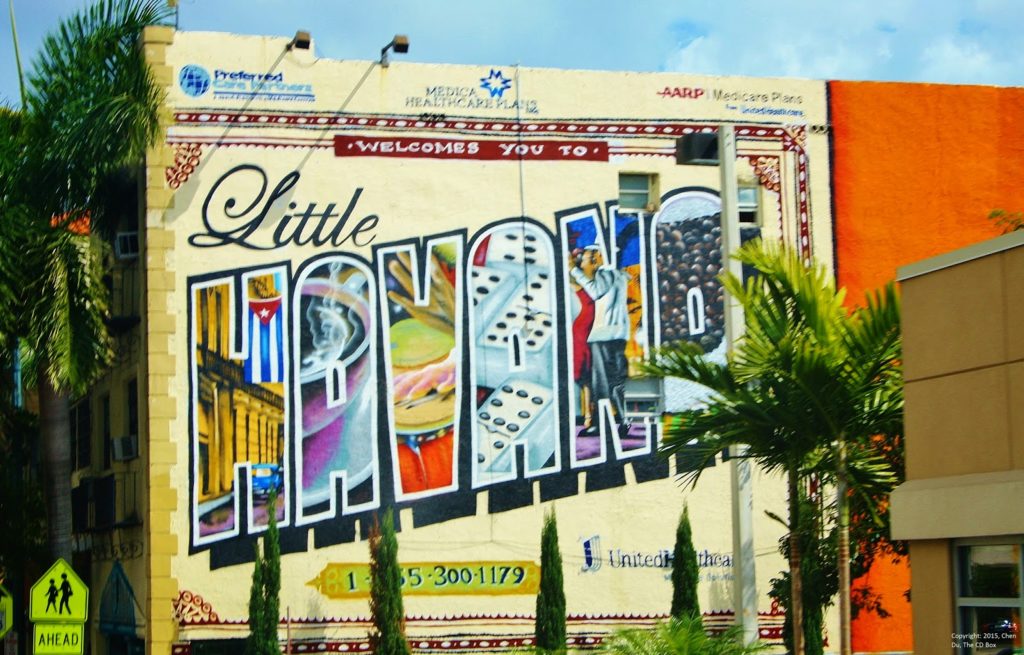
Little Havana, the cultural heart of South Florida’s Cuban exile diaspora, has grown over the years to include a diverse mix of Latin American immigrants and refugees. The Little Havana community, however, has too few parks for its size and density — save for José Martí Park, named after the Cuban poet and national hero. The park has become the focus of several local and national efforts, particularly as it relates to sea level rise and climate change. Currently, the park floods during the fall King Tide events and is increasingly vulnerable to flooding at other times of the year. Just a mile or so away, the neighborhood’s iconic Calle Ocho, or Eighth Street, has become a popular tourist destination, attracting new bars and restaurants to the area. Yet little of this economic activity permeates into the community. Taken as a whole, Little Havana is ground zero for a combination of development and gentrification pressures as well as significant sea level rise challenges. Community leaders and local organizations recognize the need for action and are working together with residents to find and implement solutions. This workshop will start at José Martí Park, where participants will explore the park space and meet the community liaisons team, as well as representatives from the Health Foundation of South Florida and the City of Miami, to illustrate some of the steps being taken towards greater resilience.
West Coconut Grove: Combating Cultural Erosion
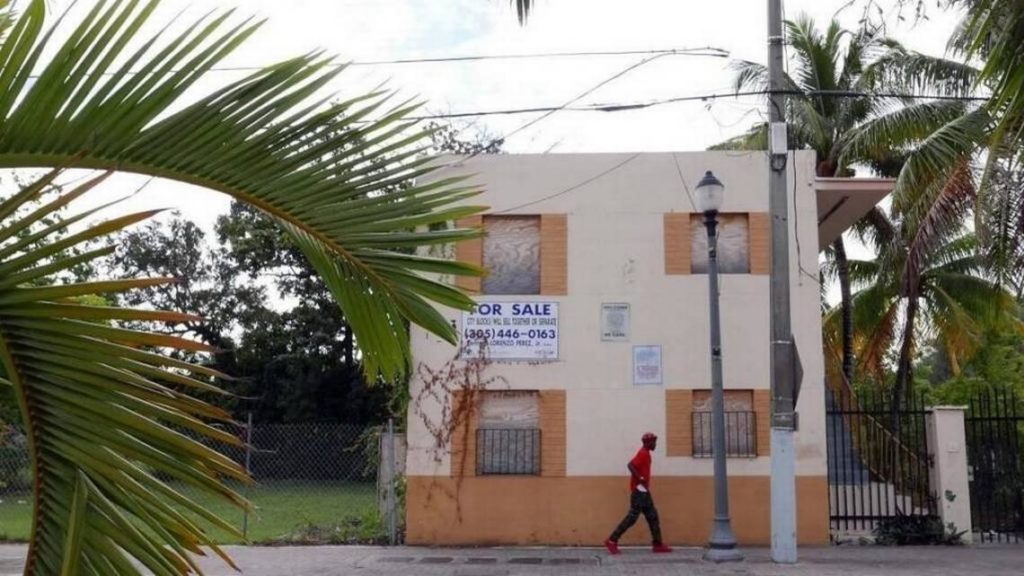
The West Grove is situated between two affluent neighborhoods, Coconut Grove and Coral Gables. Under constant development pressure, it is one of Miami’s original communities, settled predominantly by Bahamian immigrants who were brought to South Florida to build Flagler’s Railroad. Recent policy actions taken by the local commissioner in collaboration with West Grove community groups have sought to preserve or build new affordable housing, partly in an effort to hold back the cultural erosion plaguing this community. This workshop will begin with an exploration of the significant influence this neighborhood had on the growth and development of greater Miami. Participants will explore the existing dynamics of historic designation vs affordability, growth vs cultural preservation and attempts at maintaining community power despite a declining population tied to the community’s origins.
#TFNMiami Spotlight | Affordable Housing, MLK In Miami, And A Spotlight On Overtown
By Martha Cecilia Ovadia, Senior Program Associate, Equity & Communications
In advance of TFN's 2oth Anniversary Conference: Power Forward in Miami, we'll be sharing interesting and insightful resources that provide context for many of the issues we'll explore as part of our annual conference, which takes place March 18-20, 2019.
Don't forget to catch our #MiamiSpotlight and #TFNMiami news on our twitter (Funders_Network) and facebook (Funders' Network for Smart Growth and Livable Communities) feeds, and check out our TFN 20th Anniversary: Power Forward annual conference page for updates on speakers and sessions.
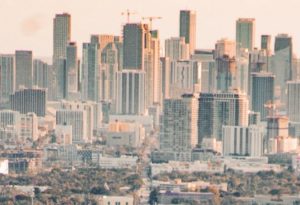 Wondering About Affordable Housing in Miami? We Took a Closer Look at the Issue (Miami New Tropic | January 2019)
Wondering About Affordable Housing in Miami? We Took a Closer Look at the Issue (Miami New Tropic | January 2019)
The shortage of affordable housing is an issue that plagues cities across the U.S., however Miami ranks among the worst. According to the National Low Income Housing Coalition, there are only 22 affordable housing units per 100 low-income renter households, when the national average is 35 units per 100 low-income-renter households.
When people can’t afford to live here, they can’t afford to work here. And that lack of affordable housing not only affects residents’ quality of life and health, but also limits the economic potential of our region. So we lose important sectors of our workforce, people that make our society vibrant and diverse.
City commissioners passed inclusionary zoning laws for a section of Downtown Miami that requires developers to set aside units in some new buildings for affordable housing. But this solution really only scratches the surface. The city is still short 30,000 affordable housing units. Meanwhile, luxury condos keep going up even when many of them remain empty. What gives? Read more here.
 Reflecting on Martin Luther King Jr.'s Time in Miami (Chris Remington | WLRN | January 21, 2019)
Reflecting on Martin Luther King Jr.'s Time in Miami (Chris Remington | WLRN | January 21, 2019)
The civil right's leader Dr. Martin Luther King Jr. spent a significant amount of time in Miami. During the 1950s and 60s, Dr. King was a regular at the historic Hampton House. The hotel, located in Mimi's Brownsville neighborhood, was frequented by many of the African American athletes and civil rights leaders of the time including Jim Brown and Malcolm X.
Dr. Enid Pinkney is the CEO and President of the Historic Hampton House. She shared stories of Dr. King's time in Miami and why he was important to the city's desegregation movement. Read more here.
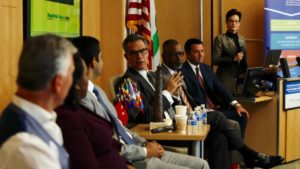 Miami lost Amazon's HQ2. Still, the area looks more attractive than ever, experts say (Rob Wile| Miami Herald | January 30, 2019)
Miami lost Amazon's HQ2. Still, the area looks more attractive than ever, experts say (Rob Wile| Miami Herald | January 30, 2019)
South Florida’s bid to attract Amazon’s HQ2 may have come up short when it came to landing the big prize. But in a panel discussion Tuesday, regional leaders said the bid process itself has galvanized the tri-county area to think and work more collaboratively.
“This process showed an extraordinary level of regional cooperation, done in a record amount of time,” said urbanist Richard Florida, who led the discussion of the panel, “What Did We Learn From Our Amazon Adventure.”
The panel, which drew about 80 attendees, was produced by the Miami Herald, the Downtown Development Authority and Florida International University’s Miami Future Urban Initiative, which Florida leads. It was hosted by the Miami-Dade Beacon Council. Read more here.
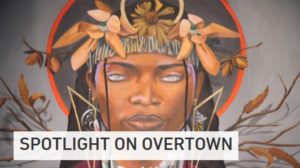 Spotlight On Overtown (The New Tropic | January 2019)
Spotlight On Overtown (The New Tropic | January 2019)
Overtown has for decades been considered the heart of Miami’s black community. In the early 20th century, when it was known as “Colored Town,” the area housed jazz clubs and local businesses that attracted everyone from a young Muhammad Ali to legends like Duke Ellington and Billie Holiday.
Today, the neighborhood is reconnecting to that past as new business and destinations for locals and tourists spring up — including the renovated Lyric Theater, which hosts performances and is home to an archive of Miami’s black history, and the Copper Door B&B, serving up breakfast specials for all the foodies out there.
This historic neighborhood has dealt with poverty, crime, and economic hardship, but longtime residents are set on building it up and making it the “Harlem of the South” once again. Read more here.
 Two More South Florida Cities, Fort Lauderdale and Coral Gables, Limit Plastic Straws (Brittany Shammas | Miami New Times | Janaury 28, 2019)
Two More South Florida Cities, Fort Lauderdale and Coral Gables, Limit Plastic Straws (Brittany Shammas | Miami New Times | Janaury 28, 2019)
You might as well go ahead and buy one of those fancy stainless-steel straws. Over the past year or so, cities across the nation have taken steps to limit plastic straws and stirrers out of concern for the environment. Now Fort Lauderdale and Coral Gables are joining them.
Declaring plastic straws an "environmental blight," commissioners in Fort Lauderdale voted last Tuesday to prohibit the products' sale or distribution in businesses, city facilities, and permitted events. Gables commissioners, meanwhile, are taking a more conservative approach: They decided earlier this month to ban them from city facilities, parks, and permitted events and from use by city vendors and contractors. "Hundreds of millions of straws are dumped into the ocean every month," Coral Gables Mayor Raúl Valdés-Fauli says. "And they don't decompose, and they create a horrible mess in our ecosystem." Read more here.
About the Author
 Martha Cecilia Ovadia is TFN’s senior program associate for equity and communications. Contact her at marci@www.fundersnetwork.org.
Martha Cecilia Ovadia is TFN’s senior program associate for equity and communications. Contact her at marci@www.fundersnetwork.org.
Meet Our 2019 PLACES Fellows
By Martha Cecilia Ovadia, Senior Program Associate, Equity & Communications
TFN is proud to announce our 2019 PLACES Fellows — 16 exemplary leaders in philanthropy who will embark on a year-long curriculum focusing on race, equity and inclusion.
A key element of TFN’s mission is to ensure these important values are reflected in the work we do — and ensuring that we support those working in philanthropy with the tools they need to turn ideals into outcomes.
For the third year in a row, our fellowship has drawn a record number of applicants from across the U.S. and Canada, and reflect a deep diversity in experience, expertise and backgrounds.
As we grapple with the real-life consequences of structural racism and other inequities, it's hard to understate the important role philanthropy can play in these contentious times.
PLACES, whose alumni now number more than 125 individuals, is designed to help professionals in philanthropy embed an equity lens into the work they do. Recent cohorts have addressed issues impacting disenfranchised communities, including structural racism, gender justice, health equity, environmental sustainability, economic development and community engagement — asking difficult questions, exploring uncomfortable truths and confronting their own biases along the way.
For more information about the new fellows, past alumni, and the PLACES fellowship itself, click here.
Many of our PLACES fellows and alumni will be at our TFN 2019 Annual Conference in Miami March 18-20. Feel free to ask them about their PLACES experience, and don't hesitate to reach out to me directly if you'd like to know more about this extraordinary fellowship. And be sure to check out our conference agenda and highlights for more information about our sessions, plenary speakers, and our first ever PLACES Equity Bash.
Join us in congratulating the 2019 PLACES Cohort, and we look forward to seeing you in Miami!
2019 PLACES FELLOWS |
Mateus Baptista, program officer, Victoria Foundation |
Dominic Braham, program officer, LISC Pheonix |
Grace Chung, community development officer, LISC New York City |
Mia Cooper, manager of diversity, equity, and inclusion, Metro United Way |
Jonathan Cunningham, program officer, Seattle Foundation |
Denise Herrera, senior capacity building officer, St. David's Foundation |
Jonathan Hui, Associate Program Officer, The Kresge Foundation |
Mohamed Huque, board member, Inspirit Foundation |
Christina Kamkosi, program coordinator, Empire Health Foundation |
Tonja Khabir, executive director, Griffith Family Foundation |
Sara Levine, quality schools program officer, Rogers Family Foundation |
Michelle Morris, director of community philanthropy, Duluth Superior Area Community Foundation |
Ogonnaya Newman, program officer, The JPB Foundation |
Darlene C. Russell, senior program officer, Greater Milwaukee Foundation |
Gabrielle Sims, program associate for neighborhoods and housing, The Boston Foundation |
Craig Stumpf-Allen, director of grants and community engagement, Edmonton Community Foundation |
Watch PLACES alum Anneliese Grytafey speak at TEDxToledo
By Martha Cecilia Ovadia, Senior Program Associate, Equity and Communications
Navigating government and social services in the United States can be labyrinthine at best, and that confusion can create true obstacles to community change, says PLACES alumni Anneliese Grytafey.
Grytafey, vice president of strategic initiatives and grantmaking at TFN member Toledo Community Foundation, recently delivered a talk at TEDxToledo, breaking down how it got so confusing, and what philanthropic and other nonprofit organizations can do to change it if we want our communities to thrive.
"Accountability is one of our most fundamental political institutions," she says in her talk, noting that we live in an increasingly polarized society plagued by eroding faith in our systems of governance.
But she posits that the trend can be reversible.
"More often than not, you will find that people across the political spectrum that have a common interest in things like children being fed and housed, education that is high quality, and beautiful public spaces."
Watch the video to hear her full talk.
A 2015 PLACES Fellow, Grytafey came to the field of philanthropy after career as a legal services attorney. Through an Equal Justice Works Fellowship, Grytafey started a clinic to provide legal advice to low-income entrepreneurs. She later brought small business capitalization services to under-resourced entrepreneurs as manager of the Toledo office of the Economic & Community Development Institute. She has also served as Director of Strategic Initiatives for the Regional Growth Partnership, a regional economic development agency serving Northwest Ohio.
Meet Our Plenary Speakers!
By Martha Cecilia Ovadia, Senior Program Associate, Equity and Communications
The Funders' Network is thrilled to announce our plenary speakers and presenters for TFN's 20th Anniversary Conference!
Our plenary lineup offers thought-provoking speakers who will delve into some of the thorniest issues we face in increasingly challenging times.
How are we grappling with the stark realities of climate change and other environmental threats to our communities and health? How are we confronting systemic inequities and structural racism? And how can leaders in philanthropy help people and places to thrive, regardless of zip code?
Join us in Miami to hear from these compelling voices, and be sure to check out our TFN 20th Anniversary Conference website for additional conference highlights, updates, and registration!
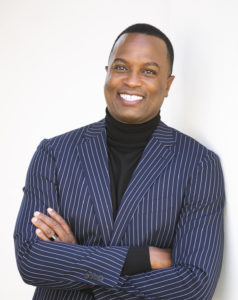 Michael McAfee
Michael McAfee
President and CEO, PolicyLink
Closing Plenary | Wednesday, March 20
Michael McAfee leads PolicyLink, a national research and action institute focused on advancing racial and economic equity. He brings more than 20 years of experience as a leader who has partnered with organizations across the public, philanthropic, and private sectors to realize this vision. Prior to his role as PolicyLink president and CEO, he served as the founding director of the Promise Neighborhoods Institute at PolicyLink. Under his leadership, PolicyLink emerged as a national leader in building cradle-to-career systems that ensure children and youth in our nation’s most distressed communities have a pathway into the middle class.
In Conversation: Power of Philanthropy
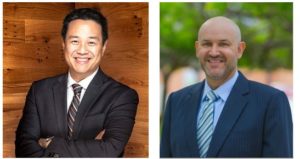
Don Chen, President,
Surdna Foundation
Javier Alberto Soto, President & CEO,
The Miami Foundation
Afternoon Plenary | Monday, March 18
Join us in conversation with these two visionary leaders as we explore the power of philanthropy to transform communities, build opportunity and address inequities — and what leaders in the sector need to know to guide their organizations through challenging times.
Javier Alberto Soto is president and CEO of The Miami Foundation, a community foundation using civic leadership, community investment and philanthropy to improve quality of life in Greater Miami. Under his leadership, the foundation has homed in on three critical issues: parks and public spaces, transportation and urban mobility, and adapting to sea-level rise. He also serves as chair of the Council on Foundations' Board of Directors.
Don Chen is the president of the Surdna Foundation, where he leads the 100-year old foundation’s efforts to strengthen and further leverage its commitment to social justice. Don is the former director of the Cities & States program at the Ford Foundation, where his work supported equitable urban development initiatives and the strengthening of social justice organizations and networks.
Climate and Community:
On the Front Lines
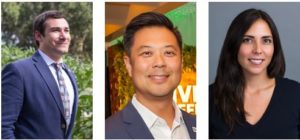
Chris Castro, Director of Sustainability,
City of Orlando
Roger Kim, Executive Director,
Climate and Clean Energy Equity Fund
Andrea Mercado, Executive Director,
New Florida Majority
Morning Plenary | Tuesday, March 19
Communities are on the front lines of climate change, meaning they must grapple with increasingly common natural disasters and other environmental threats. These impacts pose a hazard to physical, social and economic well-being of — and disproportionately affect communities of color, low-income communities and other vulnerable populations. Hear from our three compelling speakers about how activists, advocates and funders are working to find solutions to the challenges of climate change to create communities that are not only sustainable and resilient, but equitable and just.
Poetry, Prison and the
Power of Voice
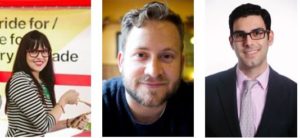
Sam Gill, Vice President/Communities and Impact,
Knight Foundation
Melody Santiago Cummings, Managing Director, O, Miami
P. Scott Cunningham, Founder/Executive Director, O, Miami
Opening Plenary | Monday, March 18
Join us as we open TFN’s 20th Anniversary Conference: Power Forward, with an interactive presentation by O, Miami, a non-profit poetry 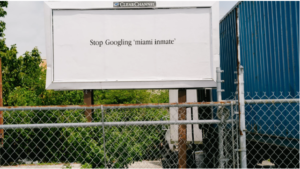 organization that seeks to democratize access to literature and re-think the role of the literary arts in American society — including collaborative work that highlights and subverts the way prison populations are systematically isolated and effectively silenced by institutional policies.
organization that seeks to democratize access to literature and re-think the role of the literary arts in American society — including collaborative work that highlights and subverts the way prison populations are systematically isolated and effectively silenced by institutional policies.
Funded by the John S. and James L. Knight Foundation, O, Miami’s efforts include a publishing imprint, a poetry-in-schools and prisons program, and a writer's residency, as well as a hallmark poetry festival that aims to bring a poem to every person in Miami during the month of April — residents of correctional institutions included.
#TFNMiami Spotlight | A year in review for South Florida, big dreams for the West Grove, and Art Basel descends on Miami Beach
By Martha Cecilia Ovadia, Senior Program Associate, Equity & Communications
In advance of TFN's 2oth Anniversary Conference: Power Forward in Miami, we'll be sharing interesting and insightful resources that provide context for many of the issues we'll explore as part of our annual conference, which takes place March 18-20, 2019.
Don't forget to catch our #MiamiSpotlight and #TFNMiami news on our twitter (Funders_Network) and facebook (Funders' Network for Smart Growth and Livable Communities) feeds, and check out our TFN 20th Anniversary: Power Forward annual conference page for updates on speakers and sessions.
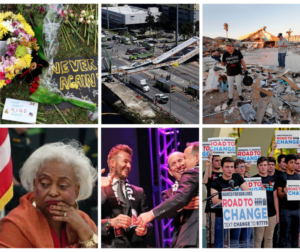 The Year In Review: Looking Back On 2018 In South Florida (Alexander Gonzalez| WLRN | December 12, 2018)
The Year In Review: Looking Back On 2018 In South Florida (Alexander Gonzalez| WLRN | December 12, 2018)
It’s been a whirlwind year in South Florida.
Tragedy struck on Feb. 14 when 17 people were shot and killed at Marjory Stoneman Douglas High School in Parkland. In the months after the shooting, lawmakers, parents and students – many of whom became the faces and voices of the March for Our Lives movement – fought to enact gun control policies and elect leaders who would prioritize school safety.
Then a little over a month later, a bridge collapsed at Florida International University, killing six people. The bridge was supposed to span traffic-heavy Eighth Street, connecting the university and the City of Sweetwater. Federal and state investigators are determining the cause of the collapse.
And in this year’s midterm election, Florida experienced déjà vu from the 2000 presidential election. The state conducted recounts for three statewide offices. The Agriculture Commissioner flipped Democrat while the gubernatorial and U.S. Senate races remained Republican. Read more here.
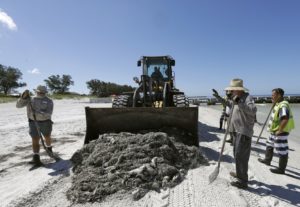
How Florida Counties Dealt With the Red Tide’s Stinking Mess (Leslie Nemo | CityLab | November 28, 2018)
When the red tide started washing dead fish onto Lee County’s beaches in southwest Florida earlier this year, the parks department met the waste like it always has: by having employees scoop it into dumpsters.
But then the toxic algae bloom got worse. The department hired extra day laborers, and when they still couldn’t keep up with the rancid waste on the county’s 50 miles of Gulf Coast shoreline (including Fort Myers and Sanibel beaches), Lee hired a private contractor to help hoist the fish into dumpsters and the county incinerator.
Eventually, the parks department had brought so much of the beach in with the fish, the facility told them to stop—the incinerator could not take any more sand. Read more here.
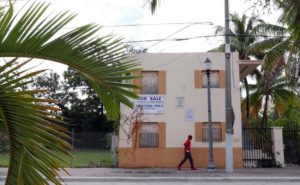 Will this plan save the West Grove? A developer has big dreams for Grand Avenue (Andres Viglucci | Miami Herald | November 26, 2018)
Will this plan save the West Grove? A developer has big dreams for Grand Avenue (Andres Viglucci | Miami Herald | November 26, 2018)
A Chicago developer who’s built a handful of small projects in Little Havana and Coconut Grove in the past four years says he has now nailed down one of the most elusive and significant real estate deals in Miami: The redevelopment of a chunk of Grand Avenue, the distressed core of the historically black and Bahamian West Grove. Read more here.
 Seismic testing for oil and gas approved for off Florida's Atlantic Coast (Jessica Weiss | WLRN| December 9, 2018)
Seismic testing for oil and gas approved for off Florida's Atlantic Coast (Jessica Weiss | WLRN| December 9, 2018)
he Trump Administration has approved the search for oil and natural gas off the Atlantic coast. Late last month, the federal government gave the green light to five applications that allow companies to use seismic testing in different sites, including along part of Florida’s eastern seaboard.
The tests work by using airguns to send sound waves through the water to image the sea floor. The waves then bounce back to deliver information about the location of buried oil and gas.
 At Art Basel Miami Beach 2018, culture colludes with and challenges consumerism (Taylor Estape | Miami New Times | December 6, 2018)
At Art Basel Miami Beach 2018, culture colludes with and challenges consumerism (Taylor Estape | Miami New Times | December 6, 2018)
For most Miamians, Art Basel is a week of horrific traffic. For some, it's a chance to engage in a multitude of cultural offerings bubbling up all over the city. For fewer, it's a chance to buy art offered by a selection of international galleries. According to statistics from Art Basel, about a third of the galleries worldwide pull in less than $500,000 a year in art sales. Another third rakes in anywhere between $1 million and $10 million. Which third is represented at Art Basel is unclear, but what is clear is why this global network of collectors, galleries, and artists finds itself in Miami Beach: More than half of the top 200 art collectors are based in the United States.
Like most things, the art world is a microcosm of what's happening globally. Representatives of Art Basel tout this year's political art, the growth of diverse representation from women artists and artists of color, and how Basel plays a role in art's significance in society, both locally and globally. What's casually ignored in these types of conversations are things such as ticket prices, sale prices for the art, and who, exactly, these collectors are. Read more here.
About the Author
 Martha Cecilia Ovadia is TFN’s senior program associate for equity and communications. Contact her at marci@www.fundersnetwork.org.
Martha Cecilia Ovadia is TFN’s senior program associate for equity and communications. Contact her at marci@www.fundersnetwork.org.
#TFNMiami Spotlight | Voting rights restored in Florida, farmworkers at risk with climate change, and the Haitian-Miami identity explored
By Martha Cecilia Ovadia, Senior Program Associate, Equity & Communications
In advance of TFN's 2oth Anniversary Conference: Power Forward in Miami, we'll be sharing interesting and insightful resources that provide context for many of the issues we'll explore as part of our annual conference, which takes place March 18-20, 2019.
Don't forget to catch our #MiamiSpotlight and #TFNMiami news on our twitter (Funders_Network) and facebook (Funders' Network for Smart Growth and Livable Communities) feeds, and check out our TFN 20th Anniversary: Power Forward annual conference page for updates on speakers and sessions.
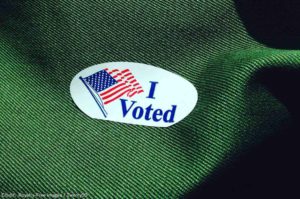 Amid pervasive voter suppression, the big winner on the 2018 ballot was voting itself (ACLU Florida | November 9, 2018)
Amid pervasive voter suppression, the big winner on the 2018 ballot was voting itself (ACLU Florida | November 9, 2018)
Voter suppression took center stage during the 2018 midterm election cycle, with states across the country failing to make voting easily accessible for everyone eligible to cast a ballot or — worse — actively making it hard.
In Georgia’s heated gubernatorial race, for example, hundreds of voters who cast absentee ballots were nearly disenfranchised due to dubious judgments made by state officials that signatures on the ballots didn’t match those on file. For the first time, North Dakota ran an election with a voter ID law that made it difficult for many Native Americans to vote, and in Kansas, polling stations used by voters of color were moved to distant, hard-to-reach locations. Partisan gerrymandering and the assault on voting rights continue to present a generational threat to American democracy. Read more here.
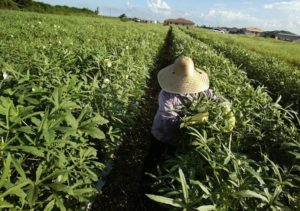
Florida heat is already hard on outdoor workers. Climate change will raise health risks (Alex Harris | Miami Herald | November 1, 2018)
Harvesting crops or building a house in the Florida sun is grueling work, and a new report shows that it’ll only get more miserable and unsafe for workers as climate change sends temperatures soaring.
By at least one safety standard, it was too hot for Floridians to do very heavy labor (like digging with a shovel) for at least an hour a day almost every single day this summer.
Unworkable, a report from Public Citizen and the Farmworker Association of Florida released Tuesday, spells out the risks to the state’s large population of outdoor workers, particularly construction and agricultural workers. Read more here.
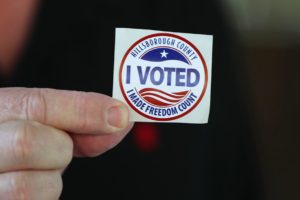 Florida votes to restore ex-felon voting rights with Amendment 4 (German Lopez| Vox | November 6, 2018)
Florida votes to restore ex-felon voting rights with Amendment 4 (German Lopez| Vox | November 6, 2018)
Florida voters during Tuesday’s midterm elections approved Amendment 4, automatically restoring voting rights in the state for people previously convicted of felonies.
Florida’s Amendment 4 restores voting rights for people in the state convicted of felonies as long as they have completed their sentences, although anyone convicted of murder or felony sex offenses would be excluded.
Based on the Sentencing Project’s 2016 estimates, this benefits more than a million people. The organization estimated in 2016 that nearly 1.5 million people in Florida have completed felony sentences but can’t vote — about 9.2 percent of the voting-age population in Florida. The total, though, includes some people convicted of murder and felony sex offenses, so not every one of those people benefits under Amendment 4. Read more here.
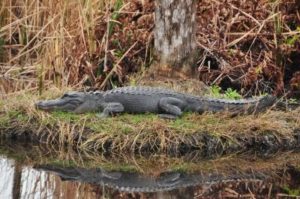 South Florida cities green-light bonds for green spaces (Sammy Mack | WLRN| November 6, 2018)
South Florida cities green-light bonds for green spaces (Sammy Mack | WLRN| November 6, 2018)
South Florida's green spaces got some serious green from voters Tuesday.
A half dozen municipalities across South Florida asked voters to weigh in on bond items that would help pay for parks and recreation initiatives. The projects involved everything from improving lighting and walkways to creating entirely new parks Read more here.
 Climate resiliency can save South Florida's future, but only if communities take action (Travis Cohen | Miami New Times | October 25, 2018)
Climate resiliency can save South Florida's future, but only if communities take action (Travis Cohen | Miami New Times | October 25, 2018)
Few issues facing the Florida peninsula are more pressing than climate change. Sea-level rise, saltwater intrusion, and rising temperatures all pose serious threats to the Sunshine State, and all of them are directly linked to our shifting climate. In 2015, during a speech given on Earth Day in the Everglades, President Barack Obama praised Miami-Dade, Broward, Palm Beach, and Monroe Counties for uniting to take on climate change.
“Five years ago, local leaders down here, Republicans and Democrats, formed the bipartisan Southeast Florida Regional Climate Change Compact — an agreement to work together to fight climate change," Obama said. "And it’s become a model not just for the country, but for the world.” Read more here.
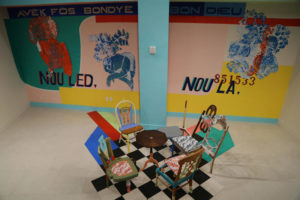 Miami artist Nadia Wolff explores Haitian identity and class in new work (Nadege Green | WLRN | September 14, 2018)
Miami artist Nadia Wolff explores Haitian identity and class in new work (Nadege Green | WLRN | September 14, 2018)
The BayParc Apartments in downtown Miami opened a space to artists through a collaboration with the national nonprofit YoungArts.
The latest installation there is “A Place To Be Held” by Miami-native and 2016 YoungArts winner Nadia Wolff. She is currently studying textile art at the Rhode Island School of Design and African Studies at Brown University.
Wolff's work is the first in a series of art projects by YoungArts alumni that will be showcased at BayParc, 1756 N Bayshore Dr. Read more here.
About the Author
 Martha Cecilia Ovadia is TFN’s senior program associate for equity and communications. Contact her at marci@www.fundersnetwork.org.
Martha Cecilia Ovadia is TFN’s senior program associate for equity and communications. Contact her at marci@www.fundersnetwork.org.
Going PLACES: Becoming A Change Agent
By Andrea Hulighan Director, Community Grants Coordinator and Youth Grantmakers in Action, The Winston-Salem Foundation
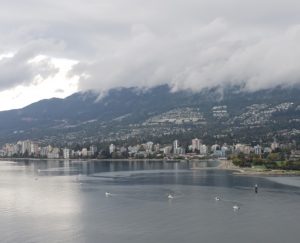
I don’t know why but it took flying outside of the country to the city of Vancouver in British Columbia, Canada for it to sink in that the PLACES fellowship is so much more than a typical professional development experience. Vancouver was the third city we visited as a group this year and I had a truly transformative experience there. While the people we met and the places we visited were fascinating and thought-provoking, it was the time I spent with my colleagues and in self-reflection that impacted me the most.
This was my first trip to Canada and everyone I talked to who had been to Vancouver told me that I was headed to a beautiful destination. They were right about the landscape; it truly did not disappoint. It was amazing to be in what felt like a large city yet look in one direction and see incredible mountains and then look in another direction and see clear blue water. Yet, this was not the first thing I observed about Vancouver. Instead I noticed right away that as a black female, I stood out. Over the course of four days, I saw fewer than 20 black people, and one of those days included walking approximately six miles in and around the city. (One question we never got answered during our stay is what happened to the black people in Vancouver.) I also noticed that there were hardly any homeless people near where were staying, and it wasn’t until we traveled to a completely different part of the city that it became clear that the homeless population is very much concentrated and essentially hidden away from popular tourist spots.
Because of my experience with PLACES, I know that the way our cities and towns look is in no way magical and I immediately began to wonder what systems, policies, and historical events led to the Vancouver I was seeing. This is what PLACES does—it makes me question everything and want to understand why the places we visit and the place I live are the way they are. We met with several representatives from local nonprofits, foundations, as well as community organizers who shared their experiences and helped us learn more about Vancouver. We met some incredible people working hard to expose and fight against both historical and current policies that have marginalized people of color who are living in Vancouver.
Each person we met started their introduction with by sharing that the land we were on was unceded and then named the specific groups of indigenous people who to this day have not surrendered the land. This was powerful to hear and made me wonder what it would be like to give acknowledgements in my city of Winston-Salem, North Carolina. What if we started each meeting acknowledging the Native Americans who called this home long before the first Moravians came here and took over their land, and then acknowledged the enslaved Africans who endured horrendous atrocities just to live so that the white people could thrive? How would this change the course of our meetings and influence our conversations and actions? Could we ever be bold enough and honest enough to do this? I do not know the answers to these questions yet, but again, this is what PLACES does—it makes me question everything and think about how I can disrupt a culture that has been dominated by white norms since our country’s inception.
It’s these types of questions that have made my PLACES experience truly transformative. When we are spending time alone as a cohort during our visits, we talk about racial equity specific to our work in philanthropy and ask tough questions such as what assets are we withholding in philanthropy that are not ours to withhold, knowing how much of the wealth in this country has been obtained by oppressing certain groups of people, specifically people of color. These questions are hard to answer and honestly at times have been painful to hear as a person of color, but I have learned that we cannot do this work of social justice and racial equity without asking these types of challenging questions and trying to find the answers.
It was this trip that also made me realize how important it is for me to bridge what I learn and experience with my PLACES cohort to what I do at my foundation. Bina Patel, our incredible PLACES consultant, has been telling us this since our first visit to Wichita, but it took this trip to Vancouver for me to finally feel the weight of responsibility of becoming the change agent Bina has challenged us to be in our various foundations. One way I have started to do this is by sharing my experiences with my colleagues of color and asking them the questions that I continue to struggle with so that we can work through them together. I also recently wrote a statement about our commitment to racial equity as an organization that has officially been adopted by my foundation. I would have never had the confidence to create this statement, let alone known what to write, without my PLACES experience. I have been thinking through what I need to do next to make sure that what I have learned helps to challenge us as a foundation to infuse racial equity in all that we do.
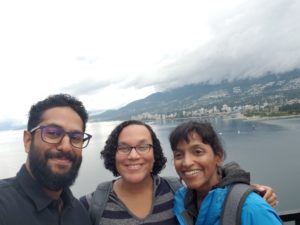
One poignant moment in Vancouver that I will always carry with me was from our last full day together when we visited the Dr. Sun Yat-Sen Classical Chinese Garden. There we met with Vanessa Richards with Creative Together. Vanessa helped us tap into our creativity through a variety of activities, including singing. I have to admit that when I saw there was singing on the agenda I cringed because I knew it would take me out of my comfort zone, but that is what racial equity work is about—getting out of your comfort zone and thinking creatively about how to interrupt the systems governed by white norms that we operate in on a daily basis. It ended up being a powerful exercise where we all were standing in a small space outside surrounded by the beauty of the gardens with no sounds other than our voices singing repetitious songs with only three or so lines that held immense meaning. It was a surreal moment, and at one point I took the time to look at the people surrounding me and felt this huge sense of gratitude for the role each of them have played in helping me grow, not just professionally, but as a human being this year. I will be forever grateful to my PLACES cohort and to Vancouver for what I experienced in a city surrounded by beauty that internally is struggling (just like we are here in the states) with defining what a truly racially equitable society would look like and how to get there.
Catch up on our last GOING PLACES blog here.
About the Author
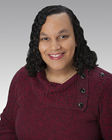 Andrea Hulighan is a 2018 TFN PLACES Fellow and is the director of Community Grants at The Winston-Salem Foundation. She also leads the Foundation’s youth philanthropy initiative. Prior to joining the Foundation in 2007, Andrea was a program manager with Today’s Students, Tomorrow’s Teachers, a national career development program for minority high school students interested in becoming teachers.
Andrea Hulighan is a 2018 TFN PLACES Fellow and is the director of Community Grants at The Winston-Salem Foundation. She also leads the Foundation’s youth philanthropy initiative. Prior to joining the Foundation in 2007, Andrea was a program manager with Today’s Students, Tomorrow’s Teachers, a national career development program for minority high school students interested in becoming teachers.
Inside Policy with Scot Spencer of the Annie E. Casey Foundation
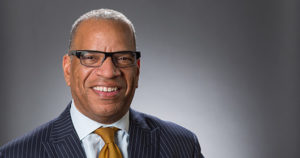
By Julie Seward, TFN Inside Policy
TFN’s second installment of Inside Policy offers a series of webinars, blog posts and other learning opportunities that allow funders to explore emerging policy trends and their potential impacts on people and communities – as well as the important role of philanthropy can play in effectively advocating for and responding to policy changes.
In a time of fitful politics, the Annie E Casey Foundation pursues its belief that responsive nonpartisan federal, state and local policies are important to building and rebuilding the lives of people and places. The TFN recently talked with Scot Spencer, associate director of advocacy and influence at the Foundation — in addition to his roles as a member of the TFN Board of Directors and PLACES advisory committee — about how Casey drives its strategies and validates its approach through a continuing chain of positive policy shifts.
Casey clearly is comfortable with its policy commitment and the benefit that accrues to the Foundation and your communities. Why does policy resonate for leadership and staff?
We believe that policy is about taking impact to scale. Program strategies and aspirational change drive any foundation, but for us, it is important to codify and imbed the tools that make the impossible become possible. Advocacy informs and reinforces our “place to base” core principles. Moreover, Casey is committed to change from the ground up — and we know that communities are critical to that process. We want the policies that we promote to be informed by the people they’ll most impact, and for us, that means lifting up authentic voices.
One example is the work Casey and our partners are leading to redevelop Pittsburgh Yards — a 31-acre site that we hope will catalyze living-wage employment, long-term career and entrepreneurship opportunities for residents in Southwest Atlanta.
Everyone involved in the project committed to ensuring residents are able to lead the planning and development in a variety of ways. This included activities like hosting monthly community meetings and site tours to brief residents on the development process and solicit input; convening working group meetings with prospective tenants and small business owners — such as welders, seamstresses and bakers — to collect feedback on building design.
This project is for residents, and we want their voices to shape it.
Data and information tracking seems to be a significant Casey priority to which you devote considerable internal resources. How does that relate to policy?
Data is a constant driver for all of our work. Internally it provides discreet facts but also allows us to gauge our approaches, influence, programmatic adjustments and effect over time. It informs our decisions and also provides real-time information to governments about what is happening and the impact of policy decisions. The foundation’s KIDS COUNT project for instance, has been used for decades to track child well-being across the nation. Jurisdictions can use the state-by-state data to measure the progress of their child-related policies, compare against the work of others, and think about how to do better. Casey is a long-term investor in its communities so we are comfortable with this tracking approach. Existing policies have many halve lives. It takes a long time to change policy trajectories that leverage successful community outcomes. Data is an important element in making those leaps.
Is there a recent "aha" moment in your work where you were reminded of the significance of Casey’s wide policy reach and commitment in changing lives and systems?
Racial and ethnic equity and inclusion has become a top priority for the Casey Foundation, and we’re increasingly looking for ways to address the racial barriers so many children and families face. By disaggregating data we are able to understand and address the widest gaps. Policy often sits in those gaps. I’ve been thinking more about the array of policy decisions that affect incarceration and criminal justice. One day I went to a rural prison and talked with longtime inmates. Amid all of the intergenerational issues that confront both government systems and lives of internees, I asked what intervention could help their lives. An inmate responded by talking about the impediments to family visitation. When his family came to visit the cost was high – take off work, pay for a hotel, find transportation, take kids out of school. And hope that the prison is not in lockdown which means no visit and wasted costs. He asked whether there was a way to create an insurance policy for prison visits. I was reminded that talking with people at this level is often how we better understand the questions and identify where to look for policy answers - simple or complex.
Where does a funder go to learn more about the best policy practice?
Go to a community meeting. We sometimes fail at hearing and it is a great place to really listen. Do this enough and you begin to see policy answers.
About the Author
 Julia Seward is currently leading TFN’s Inside Policy efforts, a series of webinars, blogs and learning opportunities that explore emerging policy trends and their potential impacts on people and communities.
Julia Seward is currently leading TFN’s Inside Policy efforts, a series of webinars, blogs and learning opportunities that explore emerging policy trends and their potential impacts on people and communities.
"In Solidarity, We Will Prevail": Philanthropy Responds To The Tree Of Life Massacre
By: TFN Staff
On the morning of Oct. 27, a gunman opened fire on worshipers attending Shabbat services inside the historic Tree of Life synagogue in the Pittsburgh neighborhood of Squirrel Hill.
Eleven people were killed and a number of others injured, including first responders.
It is difficult to find words that can serve as a balm for this type of pain and loss. In the face of unthinkable violence, growing anti-Semitism and racism, and what feels like an onslaught of anti-immigrant and xenophobic statements and actions, it is understandable how we can turn to despair and hopelessness.
And yet we believe the antidote to these responses—to the powerlessness so many of us feel right now—is to realize that we do have power. Our power, as individuals and institutions, is in standing up for what is right, regardless of what is happening around us.
We at the Funders’ Network grieve with the family members and friends of those who were killed in this senseless act of hate. We stand vigil for those injured — not only physically but emotionally -- in the community of Squirrel Hill and the larger Jewish community. We also extend our deepest gratitude to the first responders risked their lives to protect their community.
We encourage you to take time to read these heartfelt responses to the Tree of Life massacre from leaders in the philanthropic sector.
Jewish Funders Network: A Tree of Life, and Light for Joy: Philanthropy After Terror
“Philanthropy comes from two Greek works, philos and anthropos: love and humanity. Being a Jewish philanthropist is having a love for humanity that forms concentric circles: expanding outward from our own to reach the world. Philanthropy starts with the emotion of love, so it’s necessary that we react to Pittsburgh with emotions: anger, grief, disbelief and outrage.
But funders are also communal leaders. Whether they ask for it or not, they are in the drivers’ seats of many communal programs and policies. In this time of anguish and fear, people will look to us for support, resources, and guidance. They will seek our empathy but also our calming leadership. So we need to give time and space for our emotions, but simultaneously, we need to seek a thoughtful and strategic response to this tragedy.”
- Andrés Spokoiny, Jewish Funders Network
Heinz Endowment: We Are The Cure
“There is a sickness in the human heart, and love is the cure. Coming together in community is the cure. Embracing each other in all our differences as one people—that, most assuredly, is the cure. But love comes with accountability. It demands more and better of us than indifference and silence. “We see the world not as it is,” the Talmud teaches, “but as we are.” The gunman who took so many lives on Saturday saw the world not as it really is, not even remotely, but through the hellish lens of his own twisted fantasies. We can only create the alternative by being the alternative—by being the tolerant, loving, inclusive and, yes, mutually accountable people we aspire to be and know we must become.”
- Grant Oliphant, The Heinz Endowments
Pittsburgh Foundation: Statement on Squirrel Hill Synagogue Shooting
“While the person arrested in this shooting may come from our region, he represents the dark opposite of what our community is about. As Pittsburghers, our hearts are crushed, but our spirits will never be. Our foundation pledges to help this community come together across varying backgrounds and political ideologies to grieve, confront the ravages of hateful speech and political rhetoric that can lead to such violence and demonstrate the unity that is the first step toward healing.”
- Doug Root, The Pittsburgh Foundation
The Nathan Cummings Foundation: President’s Statement
“Every day, in houses of worship all over the country, communities gather to pray, to grieve, to celebrate and to love. This is not the first time that people in a house of worship were murdered in an act of terror by an American white supremacist. The Sikh temple in Oak Creek, Wisconsin and Mother Emanuel, in Charleston, South Carolina, the oldest African Methodist Episcopal church in the Southern U.S. experienced the terror of a person armed with a gun and hate opening fire. And just days ago, a gunman murdered two Black elders at a Louisville grocery store after being denied entry at a predominantly Black church nearby.
This vile act of hate and violence, though it targeted the Jewish community, was not only about anti-Semitism.
This was about emboldened white nationalism and those who are fighting for an America where only white, Christian, heterosexual people belong and are deserving of a place in our society. This was about the increasingly-dangerous political rhetoric that seeks to dehumanize, divide and isolate. We all have a responsibility to denounce this and stand together to defeat it.
This was also about radical solidarity. It targeted Jews advocating for the rights of refugees and immigrants, those fleeing crises for a safe haven here. This act was meant to divide and isolate us but it has only made us come together more strongly and with more resolve.”
- Sharon Alpert, The Nathan Cummings Foundation
Hyam Foundation: A Message From The Hyams Foundation
“A senseless murder of two African-Americans at a grocery store in Kentucky fueled by white supremacy and a fear of the “other”. A series of bombs mailed to political and media figures. A mass shooting in the Tree of Life synagogue in Pittsburgh that claimed 11 lives in what the Anti-Defamation League called “the deadliest attack on the Jewish community in the history of the United States.”
These horrific events—carried out over the course of only days—fit the terrifying and vicious political atmosphere presided over by President Trump; an atmosphere in which organized hate has become the norm; an atmosphere in which rabid nationalism, anti-immigrant sentiments, and patriarchy have become the dominant political rhetoric. Make no mistake about it: this is an alarming attempt to keep "outsiders" at bay and aid the rise of white supremacy.”
- Jocelyn Sargent, The Hyams Foundation
Living Cities: Love and Hate - A Statement from Living Cities
"Last week, and indeed for the last few years, those words “It never stops” have been uttered over and over again at Living Cities. Perhaps you have said them too, shaking your head. But all of us have the power to contribute to making it stop. We are all part of the same system and every day we have the choice to change the parts of the system that we uniquely play a role in. We can stop being passive, often silent observers when we see and hear hate. We can stand in solidarity with people who are being oppressed; people who have been victimized by racism and violence: our loved ones, our neighbors, our colleagues at the desk across from ours or across the country. We can vote and hold our elected officials accountable to the values of equity, inclusion, tolerance and love. We can ask ourselves every day what more we can do to make it stop. We started writing this piece to show Living Cities’ love for Kellie. And, after this weekend, we include in this message all who are in pain. We have to do better together."
- Ben Hecht and Nadia Owusu, Living Cities
Barr Foundation: We Must All Stand Up
"More than ever, we have an obligation to be present, to stand up and be counted, and to meet the challenge of this moment head on. For those of us in philanthropy, we must determine what of our resources, power, and voice we will deploy. We may feel our greatest contribution is to speak out in defense of the ideals and values our country stands upon. We may be focused on ensuring our partners on the front lines have the support they need to face these crises. Or both. And more."
- James E. Canales, Barr Foundation
The San Fransisco Foundation: FAITHS Statement and Call To Action
"As we grieve for our brothers and sisters killed at the Pittsburgh synagogue and for Maurice Stallard and Vickie Jones murdered at a Kroger grocery store in Kentucky, we express our deepest condolences to their families and friends. We also recommit ourselves to building a beloved community where we are our brothers’ and sisters’ keepers and allies. Our shared humanity and solidarity across different racial, ethnic, and religious communities is what binds us together and inspires us to move toward the promise of a brighter peaceful future.
We, like Dr. Martin Luther King, Jr., have decided to stick with love because as he said, “Hate is too great a burden to bear…hate cannot drive out hate; only love can do that.”
We raise our voices along with others across the country to call for an end to this violence and dehumanizing rhetoric that divides us. We believe strongly that your voice, your actions, and your vote can bring about change."
- The FAITHS Executive Committee, The San Fransisco Foundation
If you’d like to add your organization’s statement to this list, please email Marci Ovadia at marci@www.fundersnetwork.org

